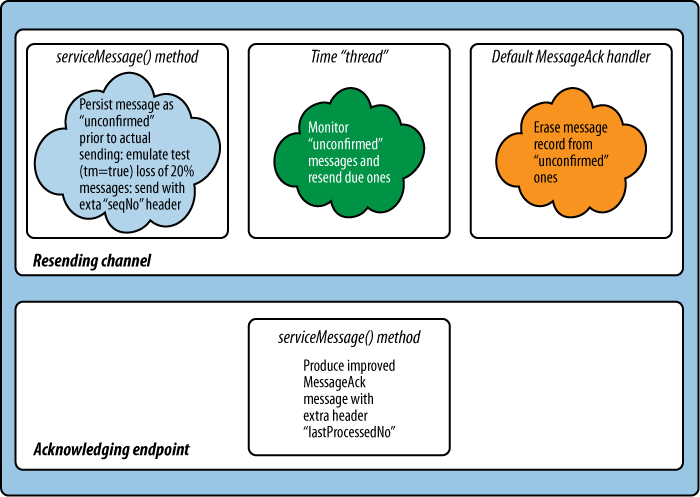The ReliableClientMessage Class
The ActionScript class that knows how to send reliable messages and
its Java counterpart are presented in Examples 5-24 and
5-25. Every outgoing ReliableClientMessage will have a unique
sequential header, seqNo.
Example 5-24. ReliableClientMessage.as
package com.farata.messaging.messages{
import mx.messaging.messages.AsyncMessage;
[RemoteClass(alias="com.farata.messaging.messages.ReliableClientMessage")]
public class ReliableClientMessage extends AsyncMessage {
static public var sequenceNo : int = 0;
public function ReliableClientMessage(
body:Object=null, headers:Object=null
) {
if (!headers) {
headers = [];
}
headers["seqNo"] = sequenceNo++;
super(body, headers);
}
}
}Example 5-25. ReliableClientMessage.java
package com.farata.messaging.messages;
import flex.messaging.messages.AsyncMessage;
public class ReliableClientMessage extends AsyncMessage {
}Note
The only reason for creating a subclass of AsyncMessage.java is to have a way to
separate regular AsyncMessage objects
that don’t require special processing from the reliable ones.

Figure 5-10. Design of the No Client Message Left Behind policy
Get Agile Enterprise Application Development with Flex now with the O’Reilly learning platform.
O’Reilly members experience books, live events, courses curated by job role, and more from O’Reilly and nearly 200 top publishers.

